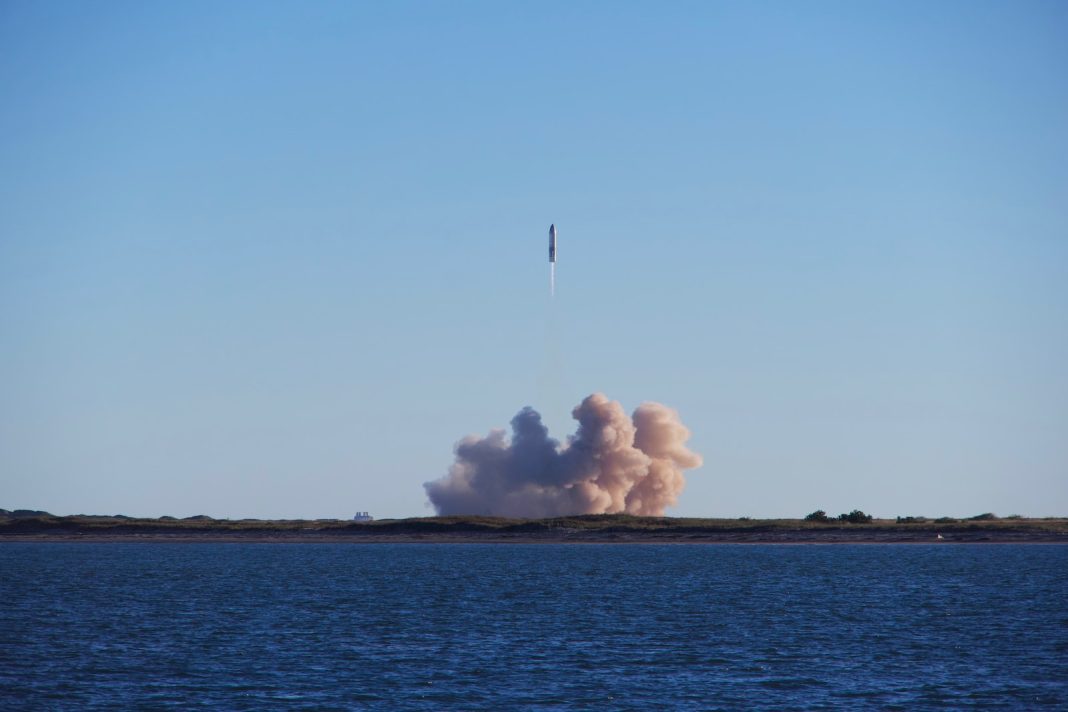In a pivotal advancement for SpaceX’s ambitious Starship project, all six Raptor engines of the upper-stage Starship were effectively ignited during a static test at the Starbase facility in Texas. This test, conducted in preparation for the next launch attempt, highlighted the immense power of the rocket designed for a Mars mission.
The Starship, set to be coupled with a Super Heavy booster for its next flight test, was securely tethered to the launchpad as the Raptor engines roared to life on Wednesday. SpaceX took to X, the platform formerly known as Twitter, to share the news, expressing, “The full-duration static fire with all six Raptor engines was successfully completed on Flight 3 Starship.”
Accompanying the announcement were slow-motion and drone videos capturing the captivating moment when all six Raptors ignited successfully. This recent static fire test is a critical step forward for SpaceX as it refines the Starship’s performance and systems.
The Starship, when fully assembled, stands as the tallest and most powerful rocket ever constructed. Despite its impressive stature, the rocket is yet to achieve the milestone of delivering a payload to orbit.
SpaceX has previously undertaken two flight tests, the first of which concluded in April with a fiery explosion during the attempted separation of the two stages. The second test, conducted last month, successfully achieved separation, but both stages broke apart shortly afterward.
Elon Musk, the CEO of SpaceX, indicated last month that flight tests might become more frequent in the future, thanks to the engineering prowess exhibited in constructing a launchpad capable of withstanding the colossal forces during liftoff. Musk conveyed, “After inspecting the Starship launch pad, it is in excellent condition. No refurbishment is needed for the water-cooled steel plate for the next launch. Congratulations to the SpaceX team and contractors for engineering and building such a robust system so rapidly.”
Ship 28, part of a trio of upper-stage prototypes in development at SpaceX’s Starbase facility, is accompanied by two Super Heavy boosters, according to information from Next Spaceflight. However, any plans for the next launch attempt are pending approval from regulatory bodies, including the US Federal Aviation Administration (FAA).
While a specific date for the next launch attempt remains undisclosed, SpaceX is gearing up for an intensified testing phase in 2024. The private space company has already secured a multi-billion dollar contract with NASA for the use of Starship rockets in its Artemis program.
As one of several private companies contributing to the program, SpaceX, led by Elon Musk, aims to support NASA in establishing a sustainable human presence on the Moon. This aligns with Musk’s grand vision of building a fleet of Starships to pave the way for a permanent human colony on Mars, a goal he believes can be achieved before the year 2050.
The success of the recent engine test marks a crucial step forward for SpaceX, bringing the dream of interplanetary travel and colonization a step closer to reality. As the Starship project progresses, the eyes of space enthusiasts around the world remain fixed on the developments at SpaceX’s Starbase facility in Texas.


